A transistor in a circuit
(a case study)
With the help of some slides (1 to 10) you can understand how you can transform a transistor in an amplifier circuit. You have to 'find' 4 resistors, connect them to the collector, the emittor and the basis, and calculate there values.
Slide
1. If you have a transitor he is doing nothing without an electric current.

Slide
2. For a current you need a voltage, so take a battery. Here: +12 Volt (DC).
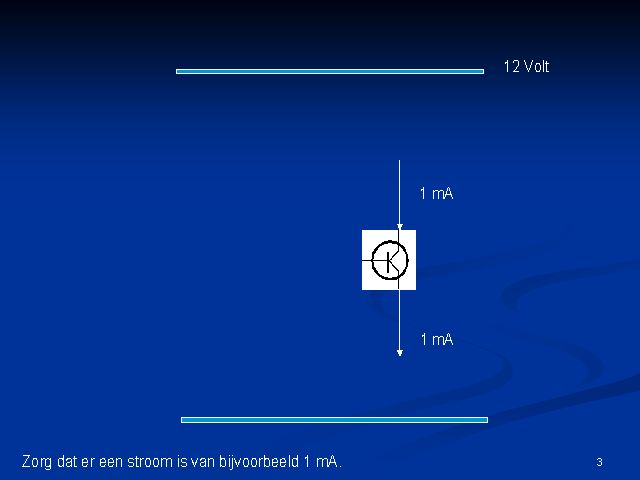
Slide
3. This transistors likes to have 1 milliAmpere (mA). How can you arange 1
mA?
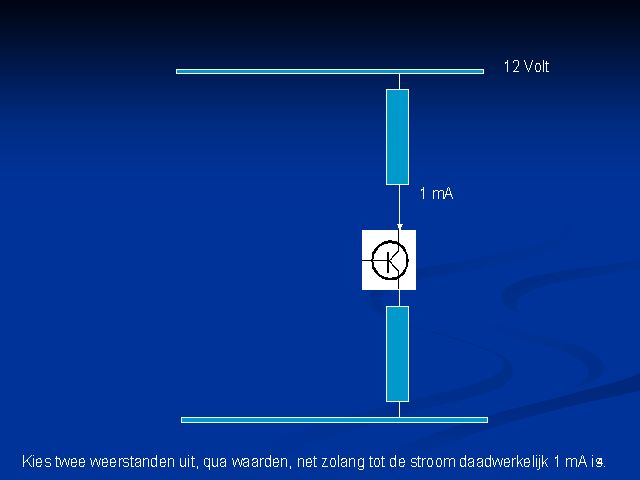
Slide
4. Take two resistors. Make a selection in their resistance value, until the
current is 1 mA.
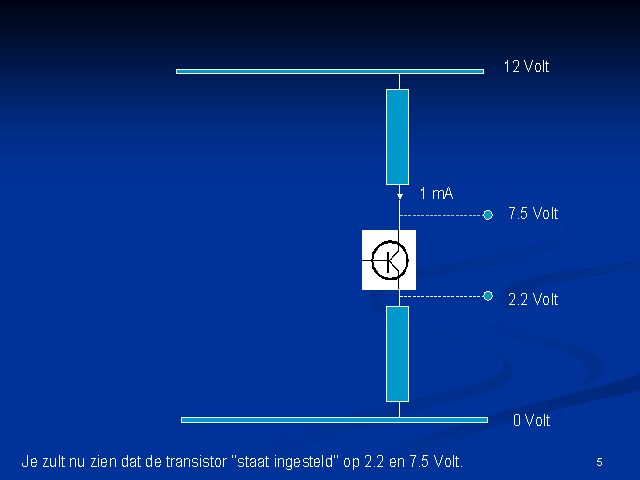
Slide
5. In this case (here) resistor 1 is 4 kOhm ('RC') and resistor 2 is 1.99 kOhm
('RE') and so the transistor voltage is become between +7.5 [V] (DC) (on the
collector c) and +2.2 [V] (DC) (on the emittor e).
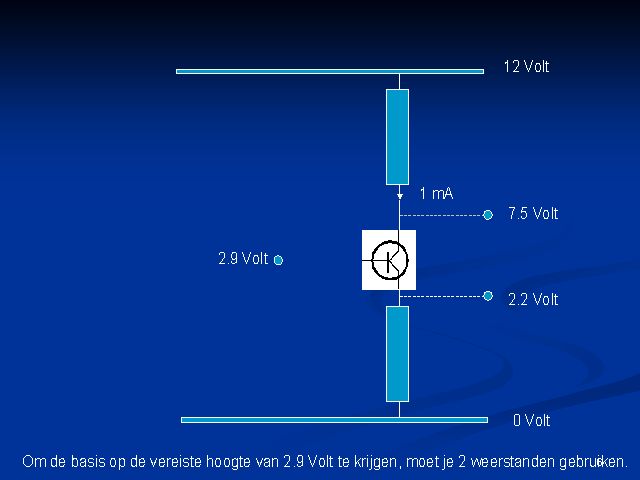
Slide
6. In a transistor there is always a difference in DC voltage between the basis
(b) and the emittor (e) of +0.7 Volt. Without this 0.7 Volt (and the very very
small current through the basis) the transistor doesn't work. Here 2.9 [V]. How
you can arrange a current and a DC voltage between b and e?
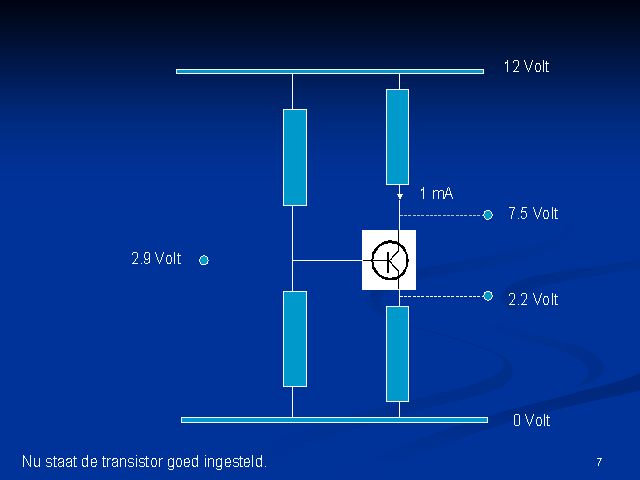
Slide
7. Create a voltage of 2.9 [V] with two resistors: R1 and R2. The current is as
small as possible. Here R1 is 174 kOhm and R2 is 56 kOhm. Now the transistor is
prepared for DC. The currents and voltages didn't change (in time). The currents
and the voltages are stable: DC. To transform a transistor circuit to an
amplifier (for AC) you need a AC source.
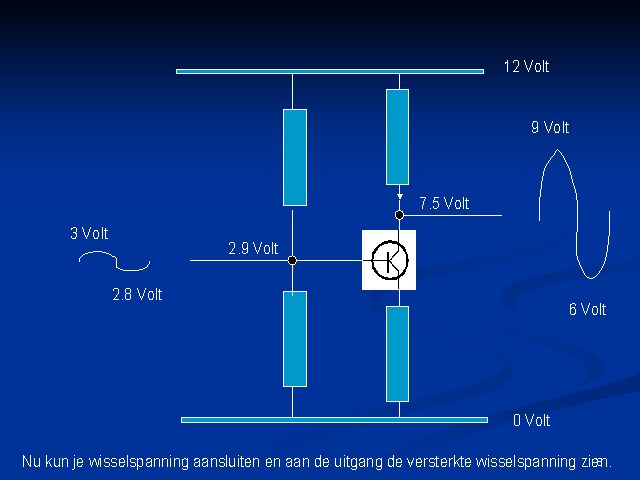
Slide
8. If you have a AC voltage source (ui), this transistor circuit can amplify
this (to uo). The amplifier coefficient (uo/ui) depends on the 4 resistances RC,
RE, R1 and R1; not the transistor itself.
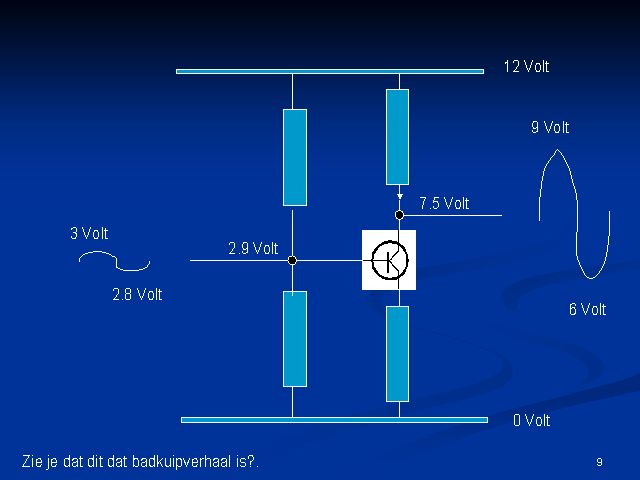
Slide
9. Now you can use this transistor circuit for amplify signals.Amplifing voltage
or current signals (AC signals) is only possible if there are DC voltages
(and/or DC currents). See the analogon with waves in a bathroom (Min, 2001;
online). "Without water: no waves". "Without deep water: no big waves".
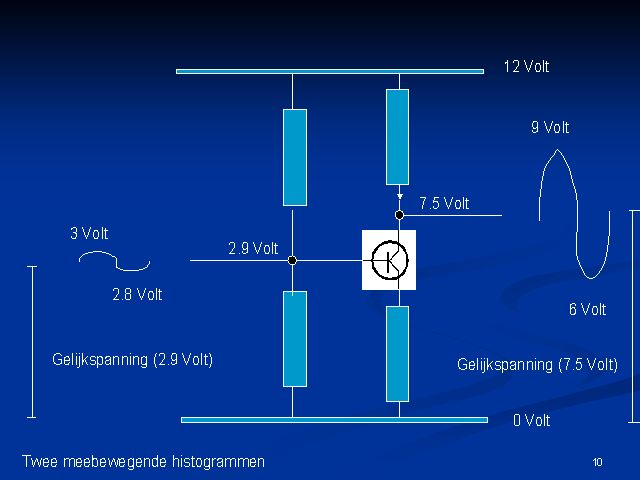
Slide
10. The DC levels (2.9 and 7.5) on the basis and collector is a condition for
succes in amplifing signals. If there is a AC signal the main voltages are
always 2.9 and 7.5 [Volt], the DC values. Without sufficient DC levels, big
signals (bigger then the drawn 6 and 9 Volt output signal), are not possible.
The minimum of the output is 0 Volt; the maximum is 12 Volt.
References:
Schaum (19xx) McCraw-Hill; partly
online.
Min (2003) Transistor; online.